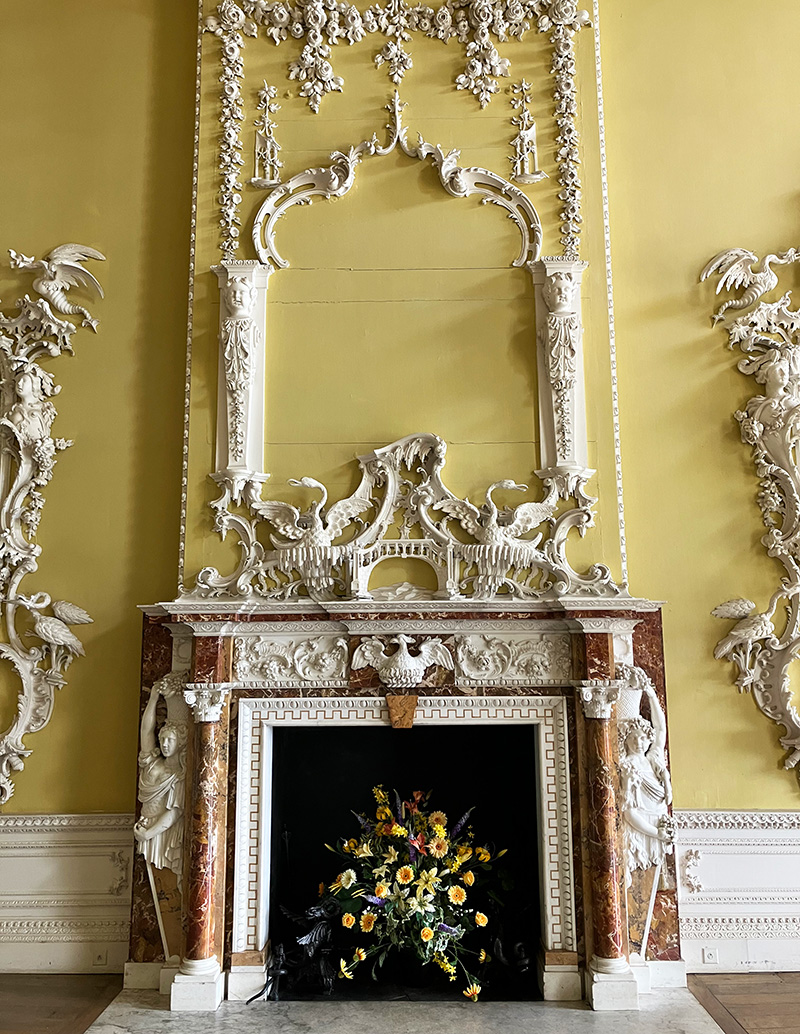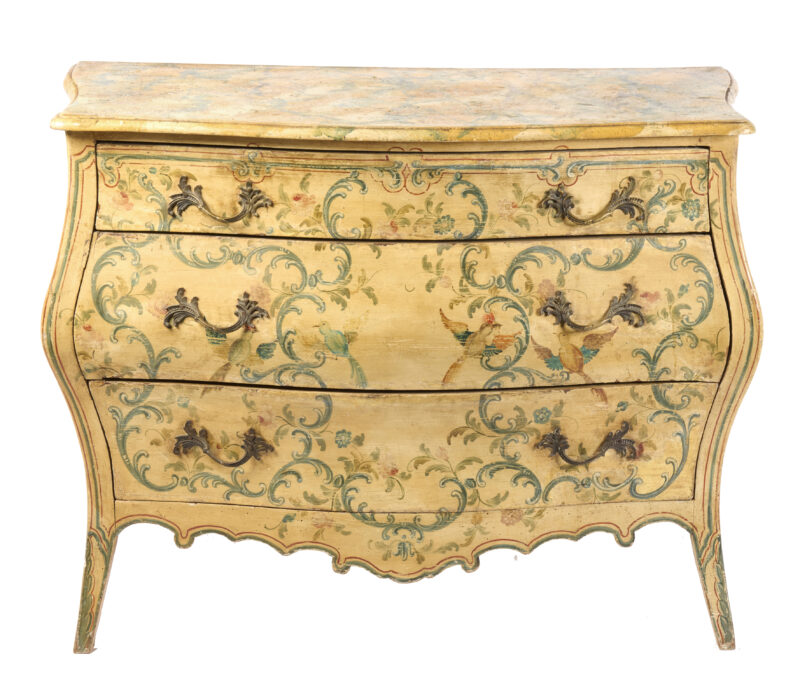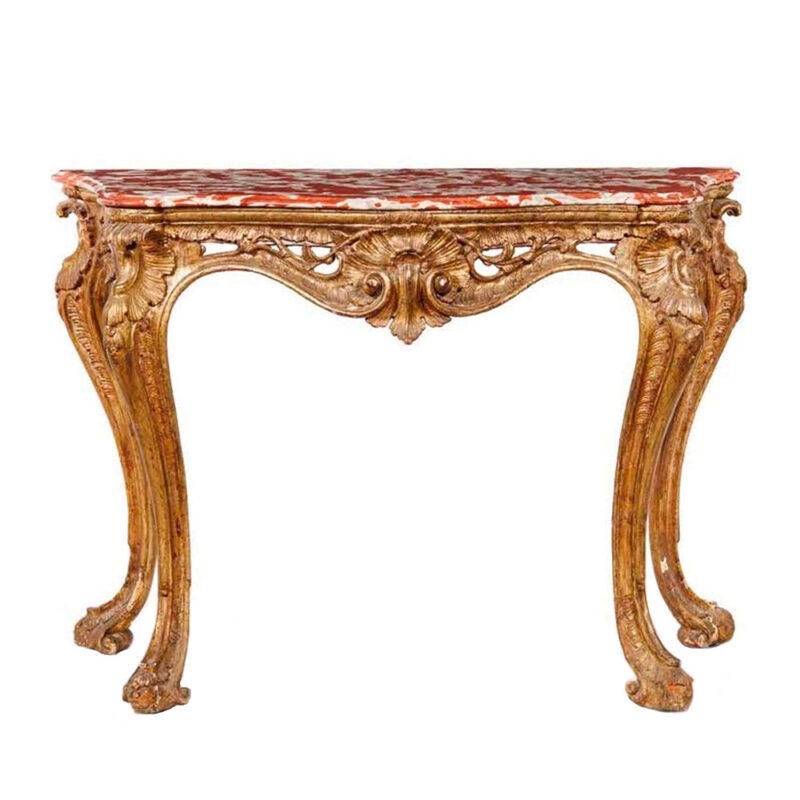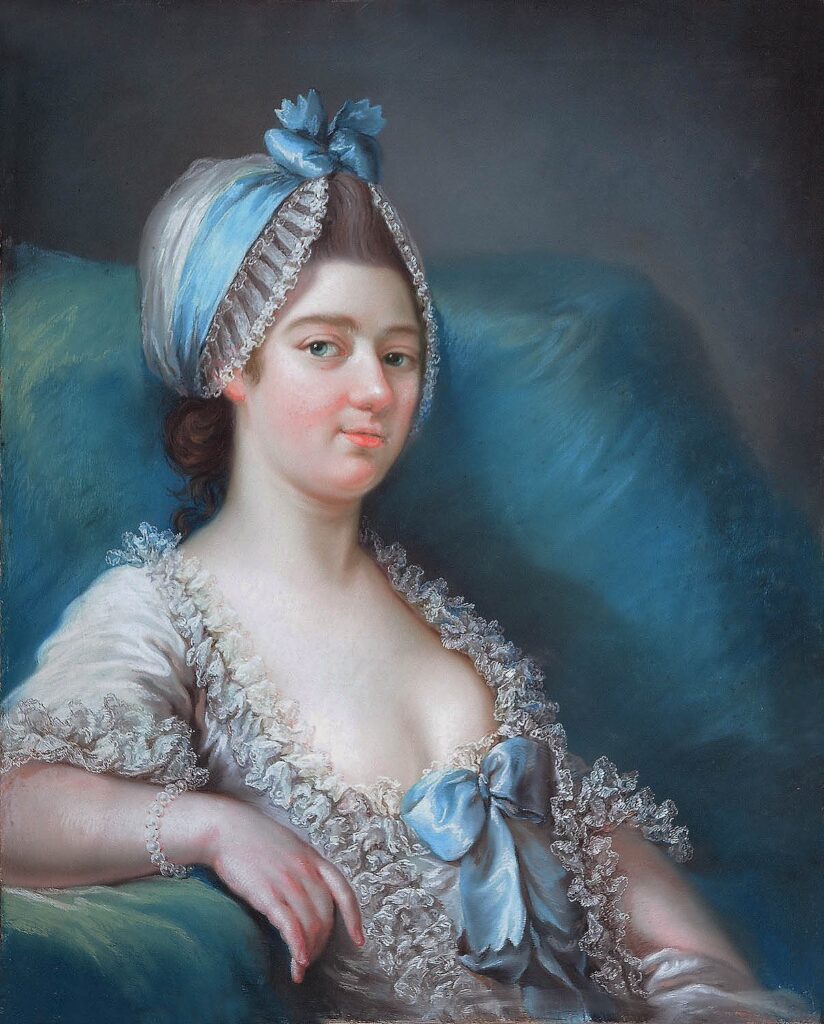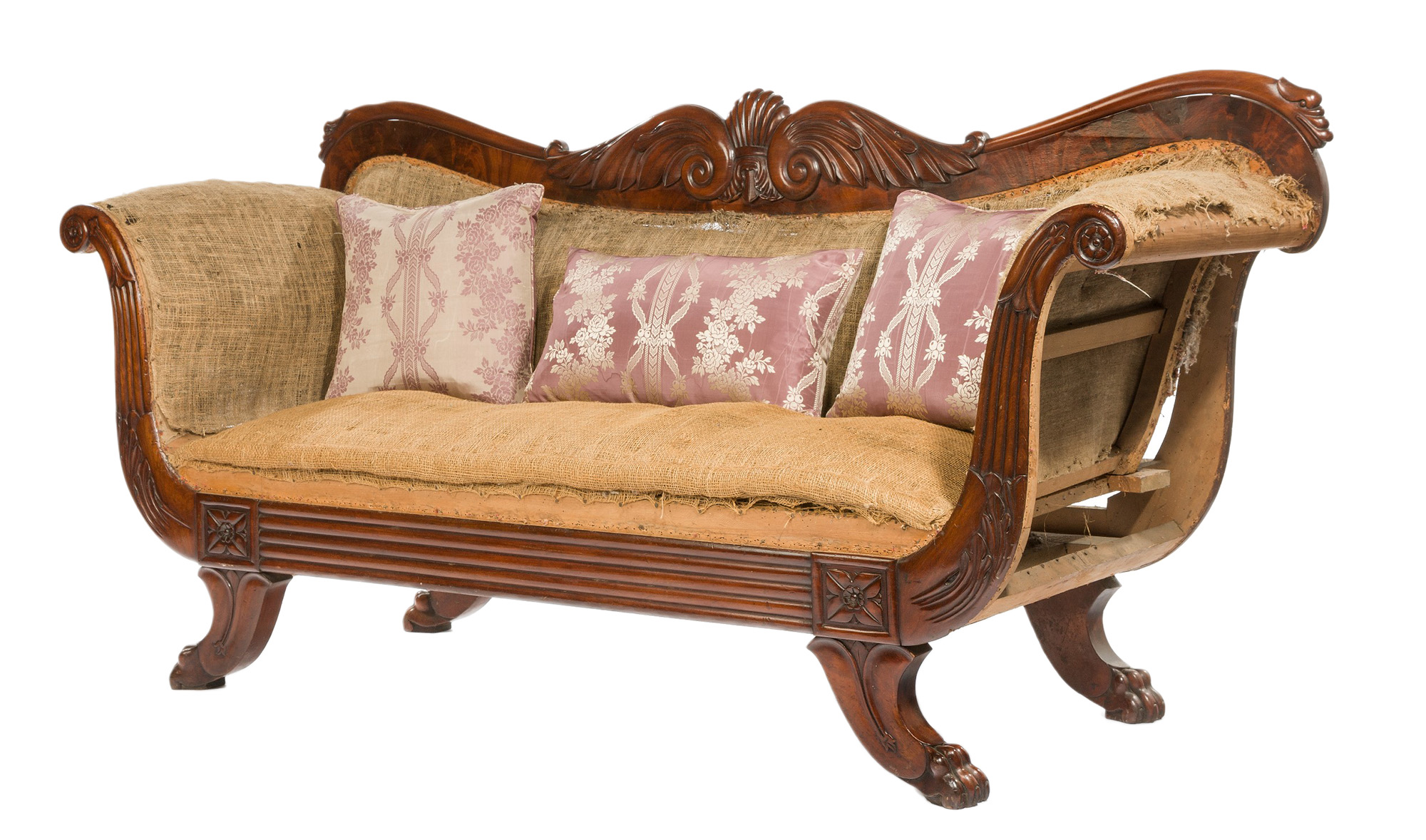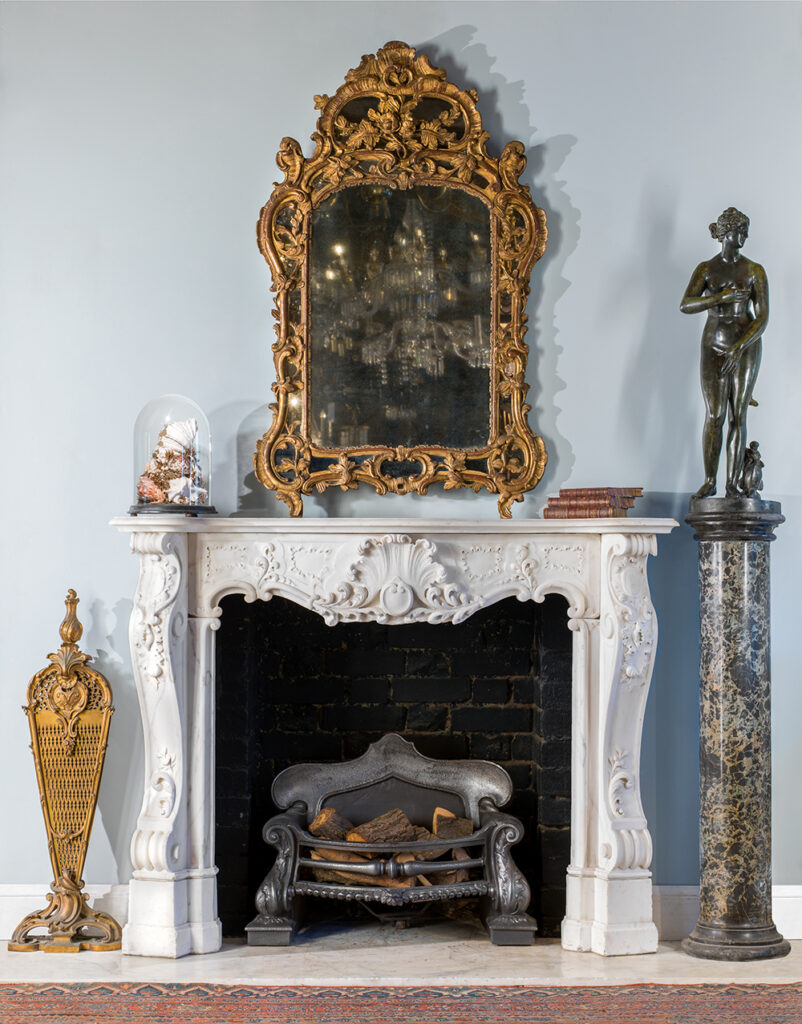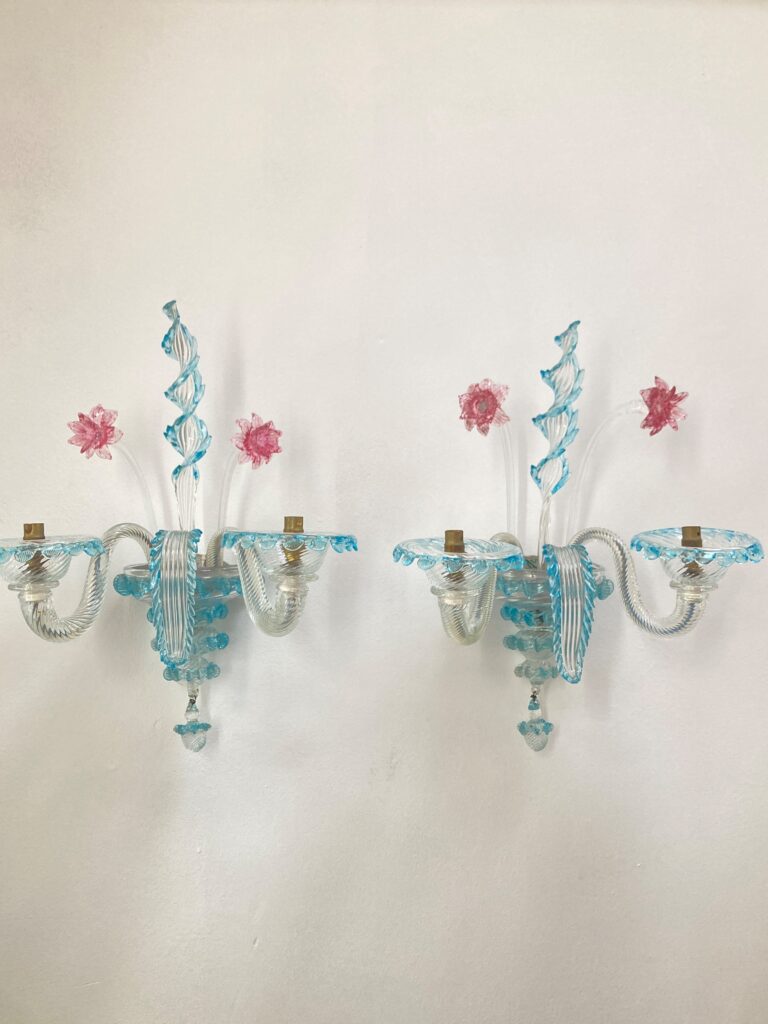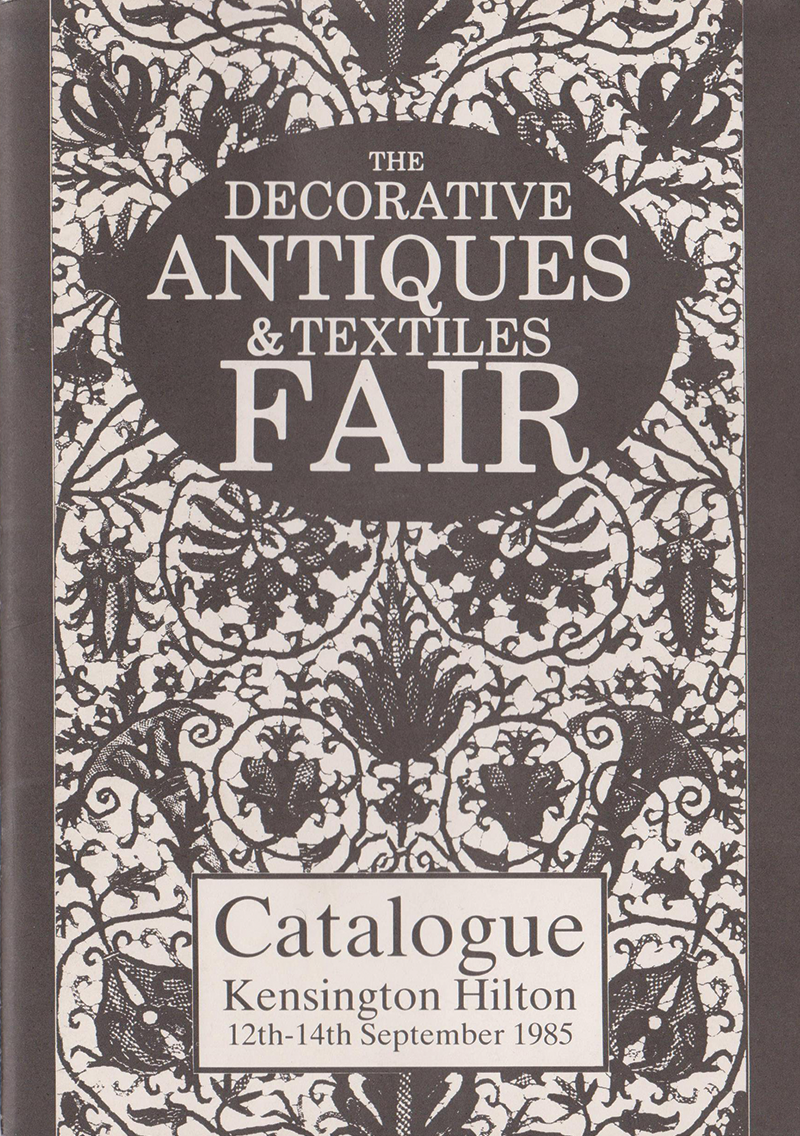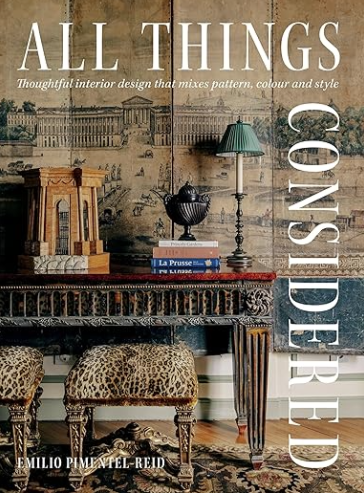Rococo style fireplace setting, Claydon House
Italian C19th commode in the elaborate rococo style
Exuberant, often fanciful, and incorporating motifs from nature, rococo developed as decorative style in the early decades of 18th century France. By the 1730s this anti-classical, ornamental decorative form arrived in Britain, primarily via silver and other designs by immigrant artists and craftsmen including Huguenot refugees from France. Using asymmetrical curves and pictorial fantasy, rococo was the antithesis of Baroque and Palladian classical order.
Rococo is defined by scrolls, C- and ƆC-shapes, shells, and elaborate naturalistic outlines. Marine motifs, flowers and fruit were frequently incorporated. In France, the defining shell motif was referred to as ‘rocaille’, hence rococo. An additional and essential element of British rococo was the acanthus leaf, which designers incorporated in swirling variations. Colours were in warm pastel hues – palest yellow, dove grey, light blues and sunny creams – with plenty of gold accents; many furniture pieces were painted profusely in flowers, festoons and garlands, and carried asymmetrical and shell-shaped gilt metal applied decoration to the drawers and legs.
C18th Italian console showing scrolls and shell decoration, Geoffrey Stead
Other anti-classical styles that appeared in the mid-18th century were gothic and chinoiserie, natural elaborate partners to the rococo that peaked in popularity between the 1740s and 1770s. Horace Walpole championed the revival of gothic design and extravagant decoration at Strawberry Hill. Chinoiserie, inspired by the fashion for Eastern imports (lacquerware, silks, porcelain), evoked an imaginary China, copying motifs and scenes from imported goods and applying them in a European manner, leading to a proliferation of pagodas, whimsical figures and creatures.
A fashionable European lady adorned with frills and bows, painted in the C18th, Darnley Fine Art
Rococo made its way in to fashion too. Dresses were embellished with frills and bows, whilst woven and embroidered textiles displayed naturalistic flowers and foliage, in patterns popularised in England by the Huguenot silk weavers of Spitalfields who brought the rococo style to London.
English William IV period rococo revival sofa. English Staffordshire porcelain dish c1840s
There was a Rococo Revival in the early 19th century, driven in part by a fashion for collecting the luxury furniture and objects that flooded the European market from the 1790s after the French Revolution. This Revival reached a peak in the 1830s, in England coinciding with the reign of the last Georgian monarch, William IV. By this period, elaborate rococo designs could be replicated more readily in new mass manufacturing methods, such as silver-plate, factory chinawares from Staffordshire and printed (rather than hand-painted) wallpapers, making the style more accessible to a wider audience than it had been a century before. In fact rococo was most popular in 18th century Britain with the rising middle and upper classes; the gentry, merchants and entrepreneurs, rather than architects and their noble patrons. Across Europe, astonishing palace interiors revelled in the unrestrained style, but in Britain, rococo was chiefly limited to the decorative and applied arts – furniture, mirrors, wall lights, porcelain, silver, textiles – with a few exceptions, such as Claydon House in Buckinghamshire, where many rooms were lavishly decorated in applied rococo carvings.
French rococo mirror and English rococo chimneypiece, both C18th, Westland London
Painted and rococo-inspired styles continued to exert an appeal throughout the 19th century, sometimes referred to as the Louis Quinze style; it found favour in the salons of wealthy Americans who had travelled to Europe and seen for themselves the extraordinary rococo decoration at Versailles, Venice and many Germany and Prussian palaces. It was replicated in luxury French hotels in the first half of the 20th century, and in Britain its influence was revived again after the Second World War, when tastemakers such as Cecil Beaton and Oliver Messel found the romantic aura of rococo was a suitable antidote to the austerity of the war years. Beaton was renowned for creating fanciful, rococo-esque backdrops for his photographic portraits of the 1940s and early 50s, in particular the coming of age portrait he took of the Princess Elizabeth when she turned 18 in 1944, while artist/designer Messel brought the blowsy lines and soft colours to his stage designs. His staging of Sleeping Beauty is one of the Royal Ballet’s most popular, and is still in production today.
Rococo-esque 1940s Murano glass wall lights, Hossack & Gray
Recent lavish TV costume dramas have revived interest once again in this exuberant style – seen in the rooms of Queen Caroline in ‘Bridgerton’, the Russian palaces of Catherine in ‘The Great’, and the fabulous French chateau interiors that featured in ‘Marie Antoinette’. Used judiciously (it is not a style for shrinking violets), rococo decoration can bring elements of splendid humour, visual excitement and a touch of whimsy to a scheme.
Rococo is the subject of the Foyer display at the Autumn edition of The Decorative Fair in Battersea Park (3-8 October 2023). This presents an ideal opportunity to discover a variety of examples, dating from the 18th to early 20th century, all of which are for sale from exhibitors at the Fair.
The display is generously sponsored by Parker & Jules wallpapers, supplying a Spitalfields silk-inspired floral patterned paper called Eversley; a grasscloth with metallic hints, it emulates the silken and silver threads of the finest rococo textiles.
Eversley metallic grasscloth wallpaper, by Parker & Jules
Also selected for the Foyer display is a fabulous Leopard print, a choice we feel confident would appeal to the spirit of Marie Antoinette! We’re teaming it with a classic Swedish rococo cabinet which is just the right shade in its original dusky pink.
Swedish rococo cabinet, Christopher-Hall Antiques; Parker & Jules Leopard wallpaper in Coral Rose
The Foyer paint is supplied courtesy of Mylands.
Rococo Notes
Textiles: the silk weavers of London’s Spitalfields developed a particularly English interpretation of rococo, using realistic botanical details in flowers scattered across an open or subtly patterned ground, usually in asymmetrical arrangement, with clear true colours. It is possible to buy lengths of these wonderful original 18th century silks from specialist antique textile dealers, but 19th century versions are more readily found.
Artists: in Venice, Tiepolo executed wondrous ceiling decorations at, for example, Palazzo Ca Rezzonico. In France, artists such as Watteau, Boucher and Fragonard painted extravagantly picturesque scenes known as Fete Galante: in London at The Wallace Collection, Fragonard’s Girl in a Swing is a prime example.
Designers: Meissonnier was cabinetmaker to King Louis XIV in France and created many rococo designs that were published as prints, and inspired other craftsmen. In London, designer/carver John Linnell and architect James Paine are closely associated with the style. Thomas Chippendale Sr published The Gentleman & Cabinet Maker’s Directory in 1754 which spread his fanciful rococo/chinoiserie/gothic mix designs across the isles. The influence of European designers on interior products of the mid-18th century prompted a great debate around design and aesthetic theory. Hogarth’s Analysis of Beauty (1755) seems to favour the absolute perfection of asymmetry (and therefore rococo) and yet he lampooned the more extreme use of it in many of his satirical paintings; Edmund Burke philosophised on the subject; while other cabinetmakers (such as Mayhew & Ince who published The Universal System of Household Furniture in 1756) decided to produce their own ‘catalogues’ of designs, as it had become a most effective means of making sales. Many European draughtsmen and crafts people were employed in London, Birmingham and other major cities to help manufacturers produce rococo style products.
